
Bang capture with storage scope
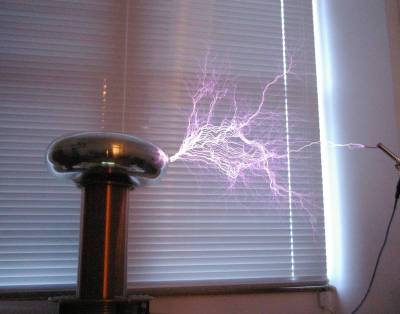
Some bangs at low breakrate similar to the ones captured here


To minimise conducted interference, I connected it to my laptop (an IBM Thinkpad 600) and ran both the laptop and the PicoScope unit off batteries. The PicoScope has a fairly flexible supply requirement of "around 12V" and I found that my spare laptop battery (which is 10.8V) ran it fine. Even so, it would start acting up when the coil was producing largish streamers. I wrapped the Pico converter box in tinfoil and put ferrite rings on all the cables leading to it, except the parallel port because I didn't have one that fitted. This cured the problem.
I connected one channel of the PicoScope to one of the H-bridge outputs via a 100x probe, and the other channel to a current transformer measuring the primary current. The probe was grounded to the DC bus negative, so the voltage channel essentially showed half the H-bridge output voltage. The CT had 33 turns and a 0.38 ohm burden to give a sensitivity of a little over 0.01V/A.
Here are some results. This bang was at almost full energy, and struck ground at about 120us. I later found out that the PLL was not properly set up, and the change in frequency due to the ground strike took it outside of its range. You can see that it loses track after the ground strike and the current begins to lag.
Click any picture to view a full-size version.
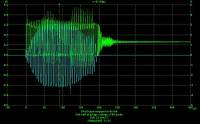
The whole bang |
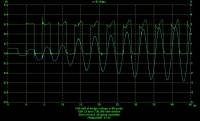
Closeup of the start |
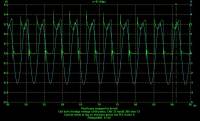
Closeup of the middle |
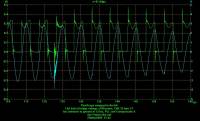
Closeup of the end |
I imported the data into Excel and calculated the total energy delivered to the tank circuit. Since I was only measuring one half of the H-bridge, I had to multiply the voltage trace by two.

It showed an energy delivery of 5.5 Joules which is pretty impressive for a tabletop coil. (My OLTC2 only had 7-9J.)